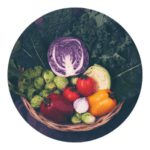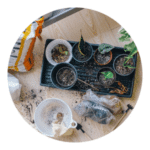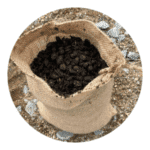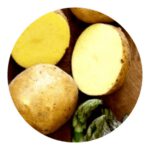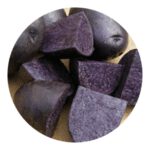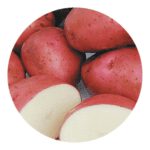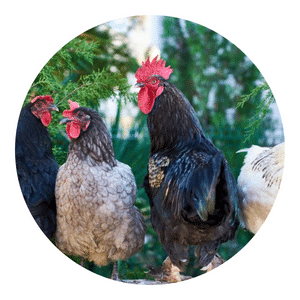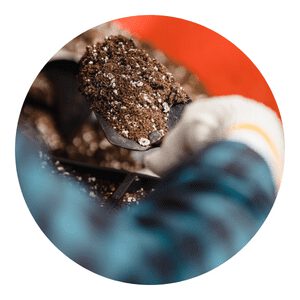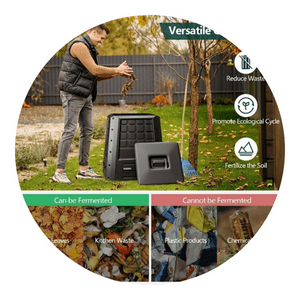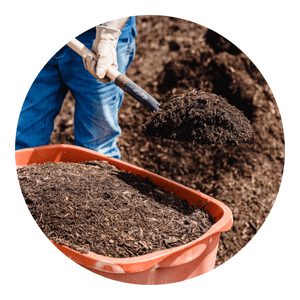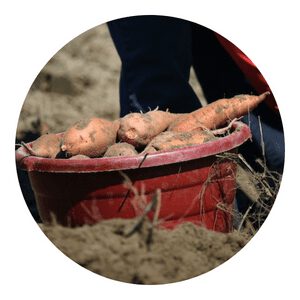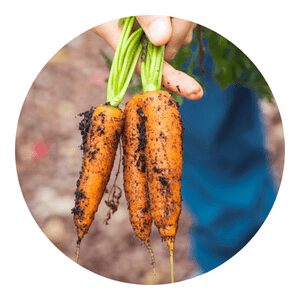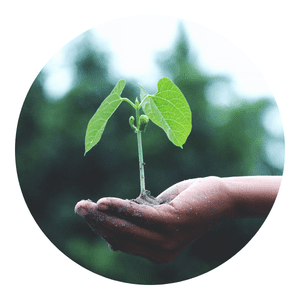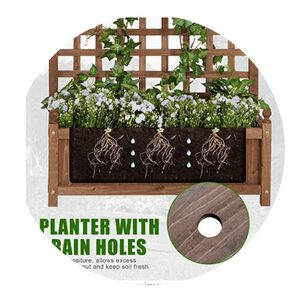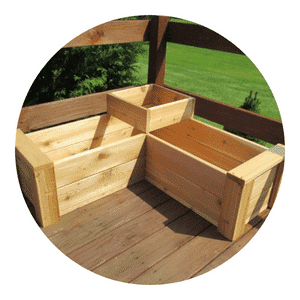How to grow organic potato
Potato Growing – One of the most useful plants in the world, eating the tubers of potatoes.
There is a huge variety of varieties in white, purple, blue, light blue, pink and more, depending on the variety.
Potatoes Menu
Chappy the Gardener is a well-known gardening expert who has published a new guide on how to grow organic potatoes.
The guide provides detailed instructions on how to plant, care for, and harvest organic potatoes.
It also includes tips on how to avoid common problems that can occur when growing potatoes.
Preparing the soil
In order to have a successful potato crop, you need to start by preparing the soil. Potatoes need loose, well-drained soil that is high in organic matter.
You can improve the soil by adding compost or manure. If your soil is clayey or sandy, you can add organic material to help it drain better and retain moisture.
Be sure to till the soil well so that it is loose and ready for planting.
Planting potatoes
There are many ways to plant potatoes, but the easiest way is to cut the seed potatoes into pieces that have at least one or two eyes on them and then let them dry for a day or two.
After they have dried, you can then plant them in the ground.
Potatoes like loose, fertile soil with a pH of 5.5-6.8. They should be planted 3-4 inches deep and 12-18 inches apart. When the plants reach 6 inches tall, you can hill them by mounding soil up around the base of the plants.
This will help keep the tubers from being exposed to sunlight, which can cause them to turn green and taste bitter.
Harvesting potatoes
When it comes to harvesting potatoes, there are a few things you need to know. You’ll want to wait until the potatoes have reached maturity, which is typically when the foliage has died back and the tubers are beginning to form.
You’ll also want to make sure the soil is dry so that you can get a good grip on the potatoes. If the soil is wet, it can be difficult to remove them without damaging them.
Once you’ve determined that it’s time to harvest your potatoes, use a digging fork or spade to carefully dig around the plants, making sure not to damage the tubers. If the ground is hard, you can use a mattock or hoe to loosen it up first.
Once you’ve loosened up the soil, gently lift up the plants and remove as many of the tubers as you can.
Choosing the right variety of potatoes
When you go to the grocery store, there are many different types of potatoes to choose from.
But what’s the difference between them all? Russet, Yukon gold, red, blue…what do they all mean? And which one is right for you?
Potatoes come in three colors: white, yellow, and purple. The most common type is the white potato.
White potatoes have a thin skin and a waxy texture. They are good for boiling or mashing.
Yellow potatoes have a thicker skin and a firmer texture. They are good for roasting or frying.
Purple potatoes have the thinnest skin and are the most delicate. They are good for boiling or steaming.
There are also three types of potatoes based on their size: small, medium, and large. Small potatoes are about the size of a golf ball. They are good for roasting or baking.
Medium potatoes are about the size of a baseball. They are good for boiling or frying.
Large potatoes are about the size of a basketball. They are good for roasting, baking and mashing.

Russian Banana

Red Thumb
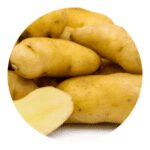
La Ratte

Austrian Crescent

French Fingerling
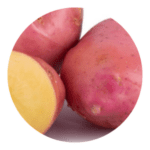
Red Bliss
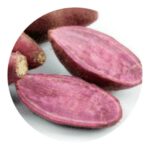
Jewel Yam
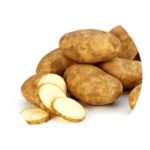
Russet

All Blue
What is the best organic fertilizer for potatoes?
Organic farming is becoming more and more popular, as people are looking for ways to reduce their impact on the environment.
When it comes to potatoes, there are many different organic fertilizers that can be used. Some of the most popular options include compost, manure, and green manure.
Each of these fertilizers has its own set of pros and cons, so it is important to weigh the options before making a decision.
Compost is a great choice because it is slow-release, meaning that the nutrients are released gradually over time. This prevents the potato plants from getting overloaded with nitrogen, which can happen if too much fertilizer is applied at once.
Manure is also a good option, but it needs to be used carefully because it can be high in salts.
Green manure is made from plants that are grown specifically for this purpose.
Horse manure
Horse manure is an excellent organic fertilizer for potatoes. It is rich in nitrogen, phosphorus, and potassium, which are essential nutrients for healthy potato plants.
Horse manure also contains other beneficial compounds that can help improve soil health and encourage potato plant growth.
Applying horse manure to your potato patch before planting can give your plants a boost of nutrients that will help them to grow strong and healthy.
Manure should be applied at a rate of 2-3 pounds per square foot of garden area.
For best results, incorporate the manure into the top 6-12 inches of soil before planting.
Cow manure
Organic farmers have been using cow manure as fertilizer for centuries.
Cow manure is an excellent source of nutrients for potatoes.
Potatoes are a heavy feeder and require a lot of nitrogen, phosphorus, and potassium to produce a good crop.
Cow manure is a good source of all three of these essential nutrients.
The main benefit of using cow manure as an organic fertilizer is that it is a completely renewable resource. Unlike chemical fertilizers, which are made from fossil fuels, cow manure is produced by cows eating grass.
Cows are able to convert the energy in grass into high-quality fertilizer.
Another benefit of using cow manure as an organic fertilizer is that it helps improve the structure of the soil.
Cow manure contains high levels of organic matter, which can help improve the tilth, or physical structure, of the soil.
Chicken manure
Chicken manure is an excellent organic fertilizer for potatoes.
It is high in nitrogen, phosphorus, and potassium, which are all essential nutrients for healthy potato growth.
Chicken manure also contains other beneficial minerals and trace elements that can help improve soil health and promote potato yields.
When using chicken manure as a fertilizer, it is important to follow the manufacturer’s instructions carefully. Manure can be very powerful and should be used sparingly on young plants or it could burn them.
Older plants can handle more manure, but it is still best to use it moderately. Too much chicken manure can actually lead to reduced potato yields due to nutrient overload.
Overall, chicken manure is an excellent organic fertilizer for potatoes and can help improve yields when used properly.
Just be sure to follow the manufacturer’s instructions and use it sparingly to avoid burning your plants or overloading the soil with nutrients.
Organic potatoes are the way to go If you want your family to be healthy and happy There's no need for all those chemicals Just some water and love will do So get started today And soon you'll be eating the best spuds around Your family will be thanking you For making the switch to organic potatoes!
Chappy The Gardener
Sheep manure
Organic fertilizer can be made from a variety of materials, including sheep manure.
Sheep manure is an excellent source of nutrients for potatoes, and it can also help to improve drainage and aeration in the soil.
When using sheep manure as an organic fertilizer, it is important to compost it before applying it to the potato plants.
This will help to reduce the risk of burning the plants.
Goat manure
Organic fertilizer is made from natural materials that decompose and release nutrients into the soil.
Goat manure is an excellent source of organic fertilizer because it is high in nitrogen, phosphorus, and potassium. These nutrients are essential for plant growth and will help your potatoes grow to be strong and healthy.
Applying goat manure to your potato patch will give your plants a boost of nutrition that will promote vigorous growth.
Be sure to compost the manure before using it as fertilizer, as fresh manure can burn plants.
To compost, simply pile the goat manure in a corner of your garden and let it break down over the course of a few months.
Once it has decomposed, you can then spread it around your potato plants.
Donkey manure
Donkey manure is an excellent organic fertilizer for potatoes. It is high in nitrogen and phosphorus, two essential nutrients for potato growth.
Donkey manure also contains other important minerals like potassium and calcium.
Applying donkey manure to your potato patch will give your plants a big boost in growth.
For best results, apply the manure in early spring before planting.
You can either work it into the soil or use it as a top dressing around the base of the plants.
Rabbit manure
Rabbit manure is an excellent organic fertilizer for potatoes. It is high in nitrogen and other nutrients that are essential for healthy potato growth.
Rabbit manure also has a high moisture content, which is ideal for potatoes.
When using rabbit manure as an organic fertilizer, it is important to remember that it is a high-nitrogen fertilizer.
This means that it can burn plants if used in excess.
It is best to apply rabbit manure to potato plants in early spring, before the plants begin to actively grow.
Fish manure
Fish manure is an excellent organic fertilizer for potatoes. It is high in nitrogen and phosphorus, which are essential nutrients for potatoes.
Potatoes grown in soil that has been amended with fish manure will have higher yields and healthier plants.
When using fish manure as an organic fertilizer, it is important to follow the recommended application rates.
Too much fish manure can burn the plants or cause nutrient imbalances.
It is also important to ensure that the fish manure is well composted before using it on potato plants.
Green manure
Green manure refers to crops that are grown specifically for the purpose of being plowed back into the soil, where they decompose and release nutrients that benefit future crops.
Many farmers use green manure as an organic fertilizer for potato crops.
Green manure can be used as both a cover crop and a source of organic matter. When used as a cover crop, green manure protects the soil from erosion and provides valuable nutrients when it is plowed back into the ground.
When used as a source of organic matter, green manure helps improve soil structure and drainage while also increasing the amount of carbon in the soil.
Green manure can also help increase potato yields by providing nitrogen, phosphorus, and other essential nutrients to the plants.
Blood meal
Organic fertilizer provides many benefits for potatoes, including improved yields and increased disease resistance.
Blood meal is one type of organic fertilizer that can be used to fertilize potatoes.
Blood meal is a dry, powdered product made from the blood of animals such as cows, pigs, or chickens. It is a rich source of nitrogen, phosphorus, and potassium, making it an ideal fertilizer for potatoes.
Blood meal can be applied directly to the soil around potato plants or mixed with other organic materials such as compost.
When using blood meal as an organic fertilizer, it is important to follow the application rates recommended by the manufacturer.
Applying too much blood meal can burn the leaves of potato plants and damage the roots.
Blood meal should be applied to potato plants at least once per growing season for best results.
Bone meal
Organic farmers have been using bone meal as an organic fertilizer for potato crops for centuries.
It is a rich source of phosphorus and nitrogen, two essential nutrients for healthy potato plants.
However, some farmers are now using other organic fertilizers, such as compost or manure, because they are less expensive and easier to find.
Bone meal can be difficult to find and is more expensive than other organic fertilizers. But it still has its benefits.
For example, bone meal contains more phosphorus than any other natural fertilizer.
This is important because phosphorus is necessary for the development of strong roots, stems, and leaves. It also helps the plant to produce more flowers and fruit.
In addition, bone meal is a good source of nitrogen, which is needed for photosynthesis and plant growth.
What month do you plant potatoes?
When it comes to planting potatoes, the best time to do so is in the month of April.
This gives the potato plants enough time to grow and mature before the hot summer months arrive.
September is also a good month to plant potatoes, as the cooler temperatures help prevent the potatoes from rotting.
How long does it take to grow a potato plant?
Growing potatoes is a relatively easy process that can be done in a short amount of time. All you need is a potato, some soil, and a little bit of water.
The first step is to find a potato that you want to plant. It is best to use an organic potato, but any potato will do.
Once you have your potato, you will need to prepare the soil. You can do this by adding some organic matter to the soil, such as compost or manure.
After the soil is prepared, you will need to plant the potato about eight inches deep.
Once the potato is planted, you will need to water it regularly. After about two weeks, the potato plant should begin to sprout.
The plant will continue to grow until it reaches about two feet tall. At this point, the potato plant is ready to harvest.
How many potatoes do you get per plant?
The average potato plant produces between 5 and 10 potatoes. However, some varieties of potato plants can produce up to 40 potatoes.
The number of potatoes produced by a plant is determined by the variety of potato, the growing conditions, and the care that the plant receives.
How many potatoes should I plant for a family of 4?
A family of four will need approximately 40 to 50 pounds of potatoes per week.
To get this amount, you would need to plant between 10 and 12 pounds of seed potatoes. Keep in mind that not all of the potatoes you plant will be usable, so it’s important to plant a little more than you think you’ll need.
When deciding how many potato plants to grow, also consider how much space you have. Each potato plant requires about 4 square feet of space.
If you have limited space, you may want to grow fewer potato plants and focus on growing other vegetables as well.
Whatever your decision, remember that growing your own potatoes is a great way to save money and eat healthy, delicious food!
Plant information:
Organic potato growing conditions:
Light soil free of grass
How to get a potato for organic growing:
Tubers, seeds
Potato growing irrigation conditions:
Multiple irrigation
Light conditions in optimal condition for growing potatoes:
Full sun (almost)
Recommended date for planting potatoes:
Early fall
Pests of the potato plant:
Aphids, anthrax, worms
Potato pruning date:
All season
Potato pruning:
If the plant is attacked, it should be pruned
Potato plant size:
80-100 cm
Potato growth rate:
Rapid growth
You can also grow potatoes in a pot:
Yes
Flowering plant:
Potato flowering date:
summer
Potato pollination is carried out by:
Bees
General information about the potato flower:
Small flowers growing in purple follow inflorescences with yellow stamens
Dilution of potato blossoms:
It is recommended to dilute
Edible roots:
Potato root information:
Tubers that appear in a variety of colors and varieties, their taste varies between varieties – some are sweeter and some are bitter.
Date of removal of the root from the soil in potatoes:
100 days or when the plant dries
Use of potato plant roots:
Cooked, baked
Latin potato:
Solanum tuberosum
More names for potatoes:
Potato, potato, potato
Is it worth growing a potato:
No, it is cheaper to buy in the store, although there are quite a few species that can not be obtained Growing a potato will not yield enough output to grow it.
If you like potatoes, it is recommended to grow Sweet potato
In conclusion, planting organic potatoes is not only a healthy option for you and your family, but it is also a sustainable way to support local farmers.
With a little bit of planning and effort, you can have delicious, home-grown potatoes on your table in no time.
So what are you waiting for? Get growing!
Click To Grow
Helps Us Grow – Share If You Like

